Interesting Facts About Buildings: Secrets Hidden in Stone

Buildings are not just structures made of bricks; they are fascinating creations that hold a wealth of interesting stories. From ancient wonders to modern marvels, buildings have been an integral part of human civilization. Whether it’s the tallest skyscraper in the world or the oldest surviving building, each structure has its own unique history. Join us as we present the world of buildings and uncover some interesting facts about buildings.
Table of Contents
- The World’s Tallest Building: Burj Khalifa
- The History of the Eiffel Tower: From Controversy to Icon
- The Sustainable Design of the Sydney Opera House
- The Mysterious Construction of Stonehenge
- The Ancient Architecture of the Great Pyramids of Giza
- The Hidden Secrets of the Taj Mahal
- The Innovative Features of Frank Lloyd Wright’s Fallingwater
The World’s Tallest Building: Burj Khalifa
The Burj Khalifa, located in Dubai, United Arab Emirates, holds the title of the world’s tallest building. It stands at a staggering height of 828 meters (2,717 feet). This iconic structure is an undertaking of modern engineering and architectural design.
The Burj Khalifa, designed by the renowned architectural firm Skidmore, Owings & Merrill, was completed in January 2010. The building features a unique Y-shaped floor plan. This helps to maximize space and reduce wind resistance. Its sleek, tapered design and shimmering glass facade make it a standout feature of the Dubai skyline.

The construction of the Burj Khalifa required innovative engineering solutions to overcome the challenges of its immense height. The building, which is supported by a reinforced concrete core, is stable and strong. Additionally, a series of set blocks along the building’s exterior help reduce wind forces.
The Burj Khalifa is equipped with state-of-the-art technology, like high-speed elevators that can travel at speeds of up to 10 meters per second. These elevators whisk visitors to the building’s observation decks, offering stunning views of Dubai. In conclusion, the Burj Khalifa is a testament to human ingenuity. Its towering height and striking design make it a must-see attraction for visitors to Dubai. This architectural wonder continues to inspire awe and admiration.
The History of the Eiffel Tower: From Controversy to Icon
The Eiffel Tower, a symbol of Paris, has a rich history dating back to the late 19th century. The tower design was by Gustave Eiffel and his team of engineers for the 1889 Exposition Universelle. It was met with controversy and criticism during its construction.
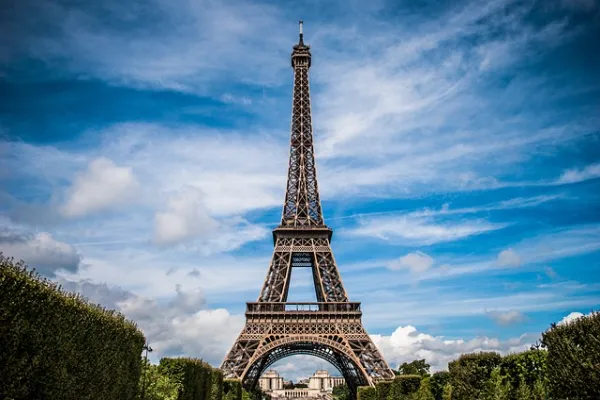
At the time of its completion, many Parisians viewed the Eiffel Tower as a blight on the city’s skyline. Critics derided its unconventional design and questioned its structural integrity. However, Eiffel and his team persevered, and the tower was ultimately completed on schedule and within budget.
Despite its rocky beginnings, the Eiffel Tower quickly captured the imagination of the public. It has become a symbol of modernity and progress. Its unique lattice structure and towering height of 1,063 feet make it a marvel of engineering and a testament to human ingenuity.
Over the years, the Eiffel Tower has become an enduring symbol of Paris. It is also a must-see attraction for tourists from around the world. Its observation decks offer stunning views of the city, and its twinkling lights at night create a magical atmosphere.
Today, the Eiffel Tower stands as a testament to Gustave Eiffel’s vision and determination. The tower continues to inspire awe and admiration in all who see it. Its timeless elegance and iconic silhouette make it a true masterpiece of architecture and engineering.
The Sustainable Design of the Sydney Opera House
The Sydney Opera House is an iconic architectural marvel. It stands as a testament to innovative design and engineering. In recent years, there has been a growing emphasis on sustainable practices in the construction and operation of buildings. Here, the Sydney Opera House is no exception. The sustainable design of the Sydney Opera House incorporates various strategies. Eather to minimize its environmental impact or promote long-term sustainability.
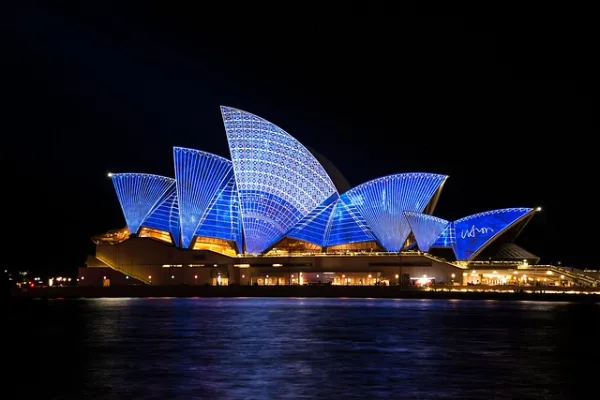
One key aspect of the sustainable design of the Sydney Opera House is its energy efficiency. The building is equipped with energy-efficient lighting, heating, and cooling systems that help reduce its overall energy consumption. Additionally, the Opera House utilizes renewable energy sources, such as solar panels. This further reduces its reliance on traditional energy sources.
Another important aspect of the Opera House’s sustainable design is its water conservation efforts. The building incorporates water-saving fixtures and technologies, such as low-flow toilets and water-efficient landscaping. This is done to minimize water waste. Rainwater harvesting systems are also in place to collect rainwater for reuse, irrigation, and other purposes.
Furthermore, the Sydney Opera House is committed to reducing its waste generation and promoting recycling and composting practices. The building has implemented waste management programs to segregate and properly dispose of waste materials.
In addition to these specific initiatives, the Sydney Opera House is also dedicated to promoting sustainability. This is done through education and outreach programs. The building serves as a platform for raising awareness about sustainable design and practices. It hosts events and workshops to engage the public in discussions about environmental stewardship.
The Mysterious Construction of Stonehenge
Stonehenge, located in Wiltshire, England, is a prehistoric monument consisting of a ring of standing stones. The construction of Stonehenge is a mystery that continues to puzzle archaeologists and historians. The monument is believed to have been built in several stages, with the earliest phase dating back to around 3000 BC.
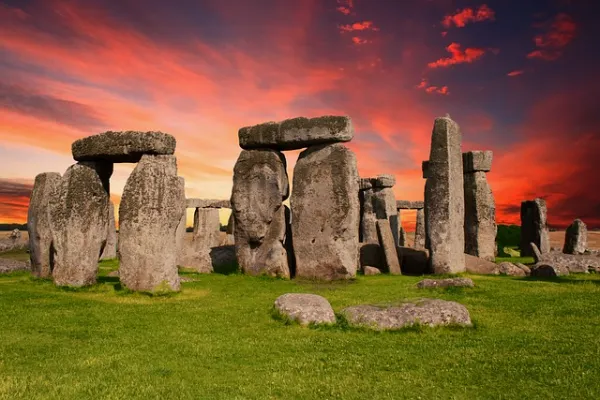
The stones used in the construction of Stonehenge are believed to have been quarried from nearby locations. Some of the smaller stones may be coming from further away. The larger stones, known as sarsens, are believed to have been transported from the Marlborough Downs, approximately 20 miles away. The smaller stones, known as bluestones, are believed to have been transported from the Preseli Hills in Wales, over 140 miles away.
The precise method by which the stones were transported and erected at Stonehenge remains a subject of debate. Some theories suggest that the stones were transported using sledges and ropes. Others propose the use of log rollers or wooden sledges. The exact purpose of Stonehenge is also a topic of speculation. Theories range from a place of worship to an astronomical observatory.
Despite the many theories and studies conducted on the construction of Stonehenge, the exact methods of its construction are a mystery. The monument continues to captivate researchers and visitors alike. Its enigmatic presence serves as a testament to the ingenuity and skill of its ancient builders.
The Ancient Architecture of the Great Pyramids of Giza
The Great Pyramids of Giza, located on the outskirts of Cairo, Egypt, are well-preserved examples of ancient architecture. Built over 4,500 years ago, these monumental structures stand as a testament to the ancient Egyptian civilization.
The Great Pyramids consist of three main pyramids, known as the Pyramid of Khufu, the Pyramid of Khafre, and the Pyramid of Menkaure. The largest of the three is the Pyramid of Khufu, also known as the Great Pyramid. It was built as a tomb for the pharaoh Khufu and is the oldest and largest of the three pyramids.
The construction of the Great Pyramids is a remarkable feat of engineering. The blocks used to build the pyramids were carved from quarries located nearby. Transported to the construction site using sledges and ramps. The blocks were then carefully stacked to create the pyramid shape, with each layer slightly smaller than the one below it.
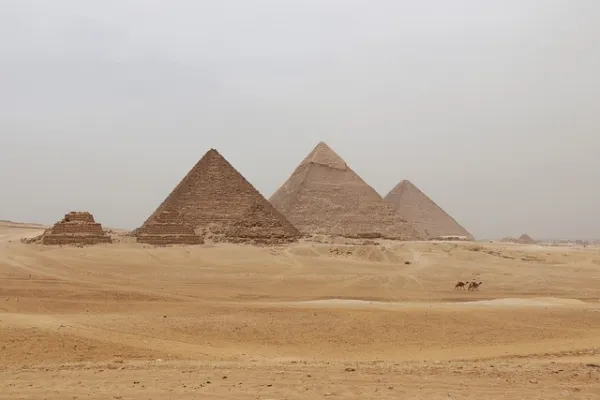
The precision with which the pyramids were built is truly astounding. The sides of the Great Pyramid are aligned with the cardinal points of the compass, and the angle of inclination of the sides is nearly perfect. The construction of the pyramids required careful planning and coordination, as well as a deep understanding of mathematics and geometry.
Despite their age, the Great Pyramids have stood the test of time. They remain the most impressive architectural achievements in history. Visitors from around the world continue to marvel at the sheer size and complexity of these ancient structures.
The Hidden Secrets of the Taj Mahal: More Interesting Facts About Buildings
The Taj Mahal, a UNESCO World Heritage site located in Agra, India, is one of the most iconic and recognizable landmarks in the world. Built in the 17th century by the Mughal emperor Shah Jahan in memory of his beloved wife Mumtaz Mahal, the Taj Mahal is renowned for its stunning architecture, intricate marble carvings, and symmetrical design. Keep reading for more interesting facts about buildings.
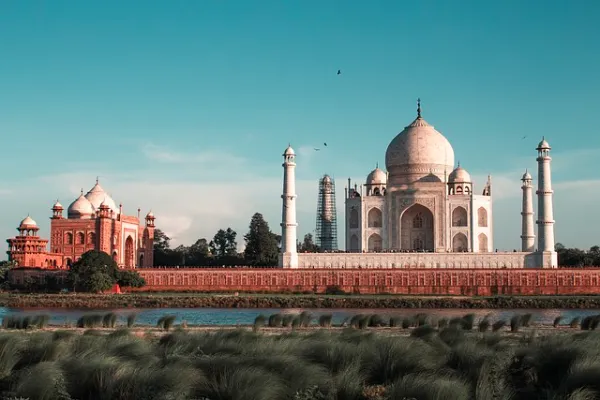
While the Taj Mahal is widely known for its beauty and grandeur, there are several hidden secrets and mysteries surrounding this magnificent structure. One of the most intriguing secrets of the Taj Mahal is the presence of hidden chambers and passageways within the complex. It is believed that there are several sealed chambers beneath the main tomb of the Taj Mahal, which have yet to be explored or excavated.
Another mystery surrounding the Taj Mahal is the presence of intricate geometric patterns and symbols carved into the marble walls of the monument. These patterns are said to contain hidden meanings and messages, although their true significance remains a subject of debate among historians.
In addition to its hidden chambers and mysterious symbols, the Taj Mahal is also said to be home to several hidden treasures. This includes precious gemstones and jewels that are rumored to be buried within the complex. While many have searched for these treasures over the years, none have been successful in uncovering them, adding to the enigmatic allure of the Taj Mahal. Overall, the Taj Mahal continues to captivate visitors from around the world with its beauty and grandeur.
The Innovative Features of Frank Lloyd Wright’s Fallingwater
Frank Lloyd Wright’s Fallingwater, located in Pennsylvania, is renowned for its innovative design features that set it apart from traditional architecture. Wright, a visionary architect known for his organic architecture principles, incorporated several unique elements into Fallingwater. This has made it an icon of modern design.
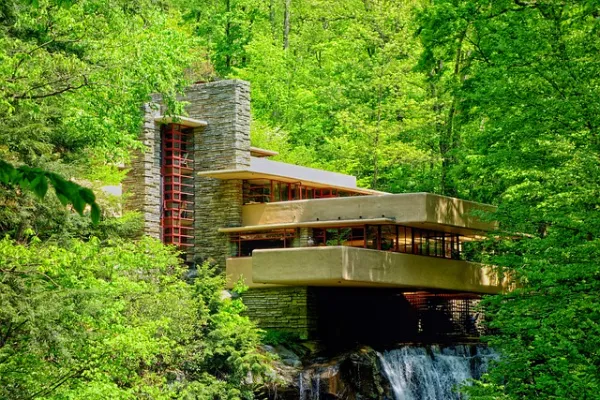
One of the most striking features of Fallingwater is its cantilevered design. Here, large, horizontal concrete slabs extend out from the main structure without the need for additional support. This creates the illusion that the building is floating above the water below, blending seamlessly with its natural surroundings. Wright’s use of cantilevered construction was a bold departure from conventional building techniques at the time.
Another innovative feature of Fallingwater is its integration with the surrounding landscape. Wright believed in creating architecture that harmonized with nature. Fallingwater is a prime example of this philosophy. The house is built directly over a waterfall, with the sound of rushing water permeating the interior spaces. Large windows and balconies provide sweeping views of the forest and stream below. This is blurring the boundaries between indoors and outdoors.
In addition to its groundbreaking design, Fallingwater also incorporates advanced technology for its time. The house features radiant heating. A cutting-edge innovation from the 1930s that provided a more efficient and comfortable heating system. Wright also used unconventional building materials such as local stone and concrete.